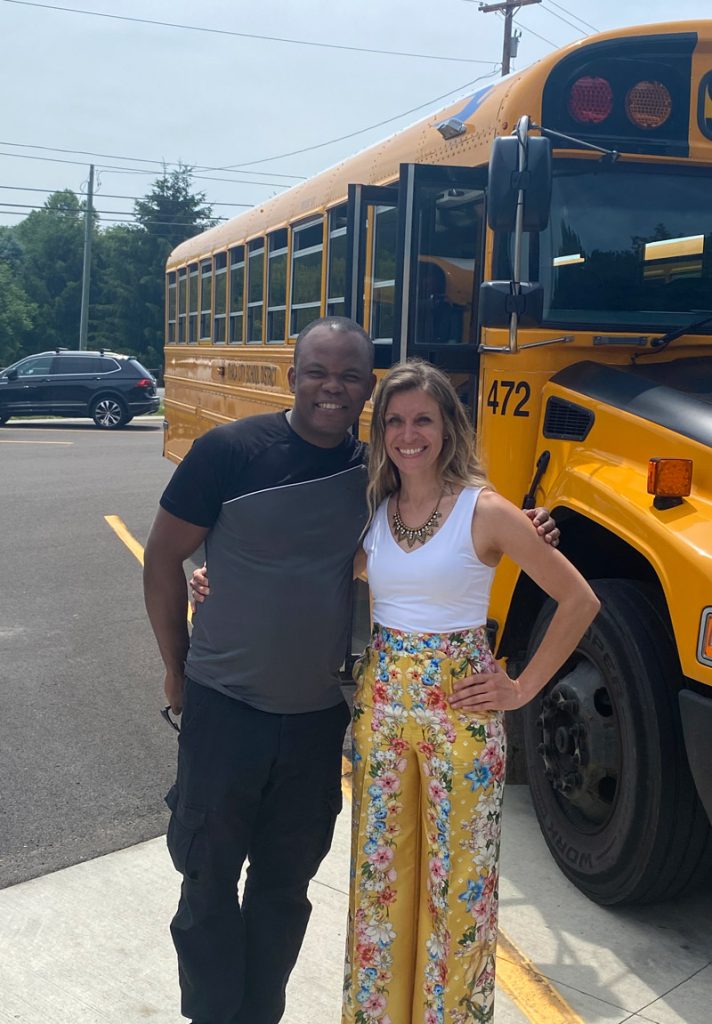Have you ever walked into a room and instantly felt out of place? Many people have experienced being the new kid in school, the new neighbor, or the new employee trying to fit in. Imagine being a prospective employee arriving for an interview and getting the sense that you don’t belong with the group of people already employed there.
Prospective employees want to feel that they are, or could be, accepted as a part of the workplace community. They want to feel connected and have co-workers who respect and relate to them.
One example of looking around and feeling out of place happened at a New York state transportation event in Albany last spring.
“I took our dispatcher, Kwantia Griffin, to Albany, and she noticed that out of the hundreds of attendees, there were only about six people of color,” recalled Elizabeth Fox, Ithaca’s transportation director. “That prompted me to come back and create an equity group and discuss the inequalities within our department and start slowly making changes.”
With every challenge facing employers—or association organizers—these days, cultivating a workplace culture that is inclusive impacts how employees relate to each other, and ultimately, to how they perform their duties and stay loyal to their job.
There has never been a better time to talk about and educate employees on workplace diversity, equity and inclusion. There is even an acronym, DEI, and schools such as Cornell University offer online learning and certification on the subject.
So, what exactly is meant by Diversity, Equity and Inclusion? The words sound as if they mean the same thing, but they aren’t interchangeable. Diversity may mean “outside the dominant group,” which is a catchall oversimplification, even when used with good intentions. Younger generations may view workplace diversity as a group of people with many different backgrounds. Older people may think of diversity as being fair to all.
Diversity may involve culture, gender identity, sexual orientation, age, physical abilities, education, or socio-economic status. When a workplace adopts equitable practices, employees feel encouraged to do their best, knowing everyone will be treated fairly. Some principles of inclusion are creating safe environments that allow employees to express themselves and feel comfortable, along with open-minded leadership. Engaged employees tend to trust their leaders.
Fox said she has made progress in the past few months hiring more people of color, and she also sees the equity group to retain the district’s marginalized drivers. “We now have 34 out of 100 staff members that are people of color, up from three when I started here a few years ago,” she added. “I don’t know of anyone else doing this within New York’s school transportation departments. Our first meeting, held in May, was a get to know your co-worker event, where people shared their backgrounds with each other. We also discussed areas where there are inequities.”
Griffin, meanwhile, is climbing the career ladder, not only going from driver to dispatcher and becoming a school bus driver instructor and 19A certified, but also cofounding the district’s equity group, and attaining a bachelor’s degree in human services while working full-time.
“I’ve been creating the [job postings] with the goal of attracting new employees, especially people of color,” Griffen added. “I want to make sure everyone knows that the Ithaca City School District is a place where they can feel comfortable, and advance if they decide to have pupil transportation become their career instead of their job.”

Expert Help Is Available
Griffin said she has also been advised by Belisa Gonzalez, a professor of sociology and the director of the Center for the Study of Culture, Race, and Ethnicity at Ithaca College, on how to improve the district’s equity group.
“Elizabeth Fox and Kwantia Griffin are both unafraid to dive into the work of equity and inclusion and do what needs to be done,” Gonzalez said. “I think that in order for any organization to achieve real sustainable change it is crucial to have the support of supervisors and harness the expertise of employees.”
Gonzalez noted there is no substitute for the lived experiences and stories of the people who are on the job.
“Often, people are made to feel like they don’t belong, particularly those who are underrepresented in a particular occupation,” she continued. “That feeling of exclusion affects work performance, not because of an individual deficiency but because people must expend energy anticipating and navigating an inhospitable workplace. There are often little adjustments that can be made to create a welcoming environment where everyone can thrive. Those changes along with equity adjustments to policy and procedures are what is needed to create a more equitable workplace.”
Derrick Agate Sr., a consultant with the Center for Effective School Operations (CESO) and a past-president of the Minnesota Association for Pupil Transportation, was a transportation director for many years, and a consultant both during and after his school career.
“As far as equity and inclusion, many times, I’ve seen a district embark on an equity program, and it gets derailed,” said Agate, who retired from Hopkins School District, serving a western suburb of Minneapolis. “One issue may be that the non-teaching staff isn’t familiar with things a teacher might know already, such as the particular language used to instruct people. Teaching equity is different for bus drivers than a custodian or a food service worker, who have other adults with them in the building. The school bus driver is performing their job solo, far from administrative assistance.”
When teaching such subject matter, Agate advised that one must realize many beliefs and behaviors are what he referred to as “in-centric.”
“By that I mean that their bias is built in,” explained Agate, who presented on DEI at STN EXPO Indianapolis earlier this month. “People don’t realize how their beliefs and behaviors were formed, and that these beliefs and actions may be considered offensive to others. A common example is that many bus drivers don’t know that telling a child, ‘Sit your butt down,’ is offensive. To them, it’s a normal way of speaking. When these beliefs and behaviors are associated with race, gender, and other biases, it can lead to systemic racism.”
Agate said bus drivers need a softer approach to equity work, because of underlying racism, perhaps unintended but perhaps not. He added that he explains to those he trains on DEI that systemic prejudices do not mean they are necessarily racist but they do need to be aware that they may have historically been the beneficiaries of such views, comments or actions.
“Then they understand what I’m talking about and might tell me how their father always told ethnic jokes, so they would do the same thing, and then someone got offended because they equated that remark to their entire race,” Agate shared. “That one incident, where someone says something in a group that they don’t consider offensive, might [result in] that one person in the corner who is insulted. That person may call the joker out, and they don’t like being called out, and it can escalate. No one ever says, ‘Hey, I didn’t mean anything. Could you help me understand why that was offensive?”
Agate said there are usually three types of personalities he encounters when training. One-third are the early adopters, those who listen, understand and want to do something about it. Another third are what Agate called the fence-sitters, those who are apathetic to the issue and view the training as simply another requirement they must sit through. The rest are the resistors, who Agate said may exert much influence on the fence-sitters.
“In my sessions, I talk to these resistors without pointing fingers at them and ask them not to derail the work. Drivers need to understand the value of relationships,” Agate said. “Understanding the value of relationships stops the cycle of mistrust.”
He advised transportation directors to ask who at the school administrative level is transportation’s champion? Who in human resources is going to support them with grievances when the union starts going up the ladder?
Having a diverse, equitable, and inclusive workplace is one way to increase driver recruitment and retention.
“I think that our equity program is also a great tool for recruitment and retention, as well as boosting morale,” said Ithaca’s Fox. “We make sure all new employees feel welcome and encourage their ideas and concerns.”
Related: (STN Podcast E99) Blaze the Path & Make a Difference: Black Leadership in School Transportation
Related: Minnesota Transportation Director Focuses on Student Advocacy
Related: (STN Podcast E105) At The Helm: Diversity & Female Leadership in Transportation
Related: (STN Podcast E12) – Tool of Equity: Educational Access for all Students Amid COVID-19
















